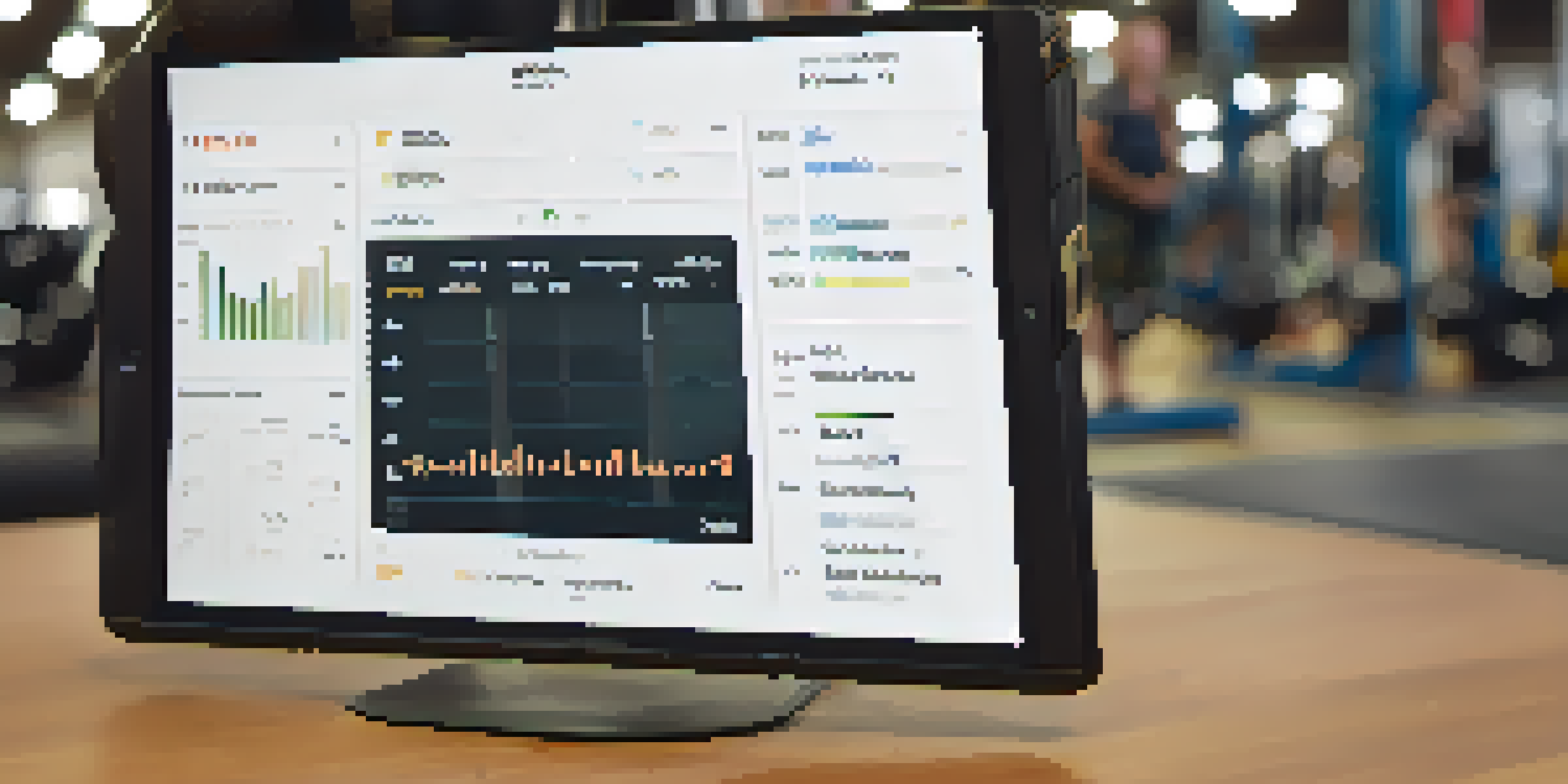Creating a Personalized Powerlifting Progress Tracker

Understanding the Importance of Tracking Progress
Tracking progress in powerlifting is crucial for measuring gains and setting goals. It allows you to see how far you've come and what areas need improvement. By keeping a record, you can identify trends and patterns in your performance, making it easier to adjust your training regimen accordingly.
What gets measured gets managed.
Imagine trying to navigate without a map; that's what lifting without tracking feels like. A personalized progress tracker acts as your guiding compass, ensuring you're on the right path toward your lifting goals. With a clear visual of your progress, you can stay motivated and focused.
Moreover, tracking can help prevent injuries by highlighting potential overtraining or improper form. When you're aware of your lifts and how they change over time, you can make informed decisions to keep your training safe and effective.
Deciding What to Track in Your Progress Tracker
Choosing what to track is the first step in creating an effective progress tracker. Focus on key lifts such as the squat, bench press, and deadlift, as these compound movements are fundamental in powerlifting. Additionally, consider including accessory lifts that support your main lifts, as they can significantly affect your overall performance.

Don’t forget to track other metrics like body weight, volume, and intensity of your workouts. For instance, recording the number of sets, reps, and weights lifted can provide deeper insights into your training cycles. This data can help you determine when to increase weights or change your routine.
Importance of Tracking Progress
Tracking your powerlifting progress is essential for understanding your performance, preventing injuries, and staying motivated.
Incorporating non-numerical data, like how you felt during workouts or any physical changes, can also be beneficial. This holistic approach ensures you’re not just tracking numbers but also your overall well-being and mental state during training.
Choosing the Right Format for Your Tracker
The format of your progress tracker can greatly influence its effectiveness. You can choose between digital tools, like apps or spreadsheets, and traditional methods, like notebooks. Each has its pros and cons, so consider what will work best for you personally.
Success is the sum of small efforts, repeated day in and day out.
Digital trackers often offer organized layouts and automatic calculations, making it easier to visualize progress over time. For example, apps specifically designed for powerlifting can provide insights and reminders tailored to your training schedule. However, some lifters prefer the tactile experience of writing down their lifts, which can help reinforce their commitment.
Ultimately, the best format is the one that you’ll consistently use. Whichever method you choose, ensure it’s user-friendly and accessible so that tracking becomes an enjoyable part of your lifting routine.
Setting Realistic and Attainable Goals
Once you’ve established what to track, it’s time to set realistic goals. Think about where you want to be in the next few months or by the end of your training cycle. For instance, if you currently squat 200 pounds, setting a goal to squat 250 pounds in three months may be ambitious but achievable with the right plan.
Break down larger goals into smaller, manageable milestones. This could mean aiming to increase your lift by five pounds each week or improving your form on specific lifts. Celebrating these smaller victories can provide motivation and a sense of accomplishment.
Setting Realistic Goals
Establishing achievable goals and breaking them into smaller milestones can help maintain motivation and provide a sense of accomplishment.
Additionally, don’t forget to review and adjust your goals as needed. Progress isn’t always linear, and being flexible allows you to adapt to any changes in your training or personal life.
Incorporating Regular Assessments into Your Routine
Regular assessments are key to understanding your progress in powerlifting. Consider scheduling monthly or bi-monthly testing sessions where you attempt to lift max weights for your key lifts. This not only provides a clear measurement of your improvements but also adds excitement to your training.
During these assessments, take the time to analyze your performance. Did you hit your goals? If not, what factors may have contributed to that? Reviewing these sessions can provide valuable insights into your training effectiveness and areas needing adjustment.
In addition to lifting assessments, consider evaluating your overall routine, including nutrition and recovery practices. This comprehensive approach ensures that you’re not just focused on the lifts but on all aspects contributing to your progress.
Using Your Tracker for Accountability and Motivation
A personalized progress tracker can serve as a powerful tool for accountability. By documenting your lifts and workouts, you create a sense of responsibility to follow through with your training plan. Sharing your tracker with a training partner or coach can also enhance this accountability.
Motivation can wane over time, but having a visual representation of your progress can reignite your passion for powerlifting. When you look back and see how much stronger you’ve become, it can inspire you to push through tough days. Think of your tracker as a motivational mural, showcasing your hard work and dedication.
Adapting Your Tracker Over Time
As your powerlifting journey evolves, it's important to adjust your tracking methods and metrics to align with your current goals and needs.
Furthermore, consider setting challenges or competitions with friends or fellow lifters. Friendly rivalry can boost motivation and make your training sessions more enjoyable and engaging.
Adapting Your Tracker to Fit Your Evolving Needs
As you progress in your powerlifting journey, your needs may change, and so should your tracker. What worked for you a few months ago might not be as effective now. Be open to adjusting the metrics you track or the format you use based on your current goals and experiences.
For example, if you've recently plateaued in your lifts, you may want to focus more on accessory exercises that target weak points. Alternatively, if you're preparing for a competition, your tracker might emphasize specific lifting techniques and recovery strategies tailored to that event.

The key is to maintain flexibility and ensure your tracker continues to serve its purpose: helping you reach your powerlifting goals. Regularly evaluate its effectiveness and make changes as necessary to keep your training relevant and productive.